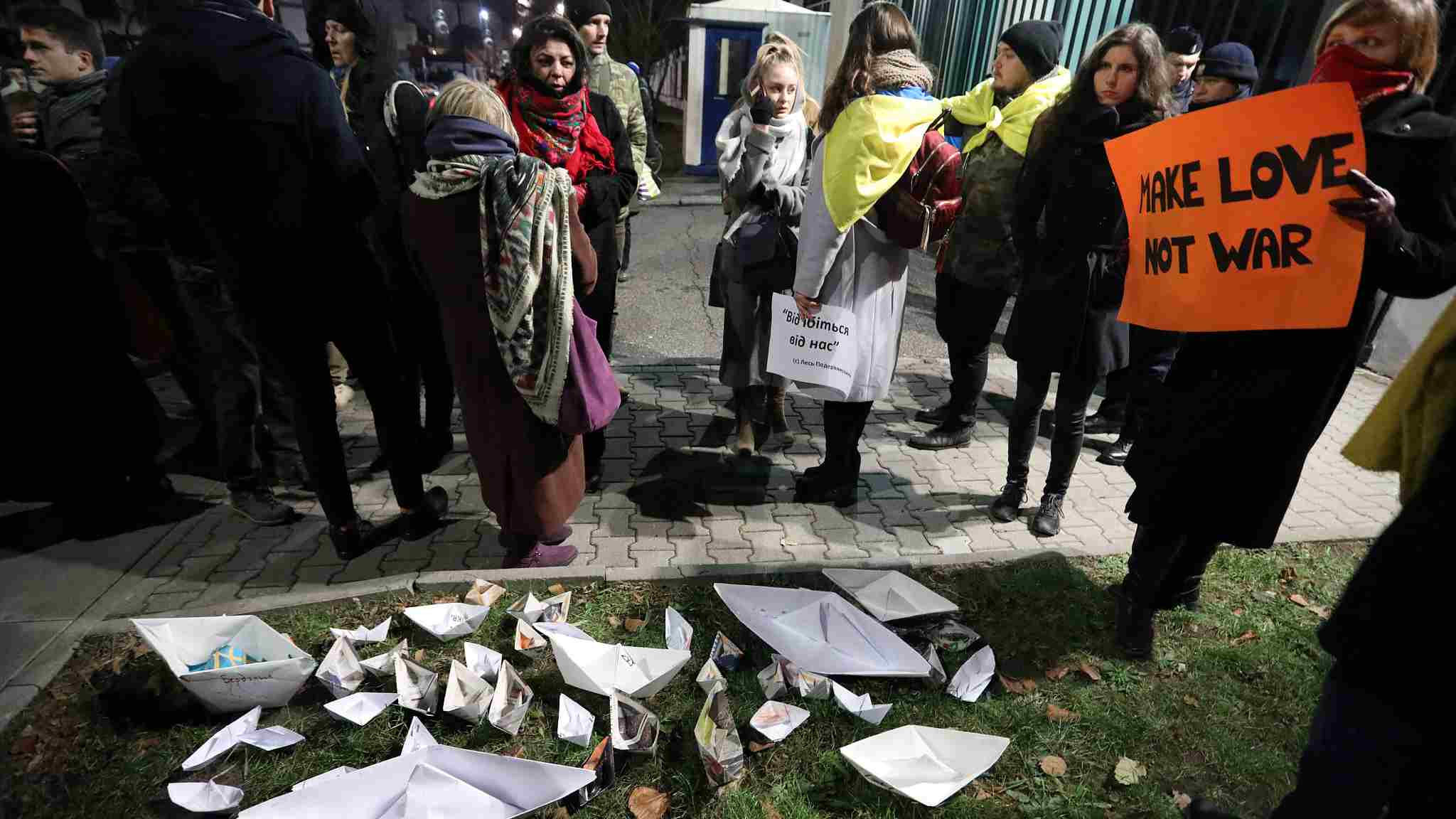What is behind the Russia-Ukraine tension?

The recent tension between Russia and Ukraine has once again drawn attention from the international community.
On November 25, three Ukrainian navy vessels were attacked and then detained by Russia around the Crimean Peninsula. Some of the Ukrainian crew was wounded during the conflict. The Security Council of the United Nations, upon the request of Russia, convened an emergency meeting the following day and discussed the appropriate response to the event. On November 27, Ukraine's Parliament approved a 30-day period of martial law, which will take effect from November 28.
Russia accused the Ukrainian navy ships of entering Russian waters and approaching the Kerch Strait without its permission. In Russia's eyes, this is considered a provocation and Russian Foreign Ministry spokeswoman Maria Zakharova said on Facebook that the strategy Ukraine used was to “provoke, pressure and then allege Russian invasion.”
By contrast, Ukraine accused Russia of dishonoring its pledge on the Law of the Sea and its treaty with Ukraine, which gave both countries the right to use the Azov Sea. Kiev argued that its vessels already informed the Russian side before entering the area, thus making the Russian attack an invasion.
Why is the Kerch Strait important?
The Kerch Strait serves as the only channel linking the Black Sea and the Azov Sea, which makes it an extremely important strategic location. There are also abundant energy reserves here. After the disintegration of the Soviet Union, the two sides have argued vigorously over the delineation of the Kerch Strait.
A treaty signed in 2003 between Moscow and Kiev gives both sides access to the Kerch Strait and the Azov Sea. But, the Ukraine crisis at the end of 2013 has, in effect, turned this agreement and many others into a mere scrap of paper.
On May 15, Russian President Vladimir Putin attended a ceremony celebrating the completion of a bridge over the Kerch Strait. This bridge, which links western Krasnodar and the eastern Crimean Peninsula, triggered strong protest from the Ukrainian side, which deny that Crimea is a part of Russia and believes the bridge has strong political symbolism.
Why is it happening now?
According to the U.S. State Department, the second round of sanctions on Russia, resulting from the poisoning of a former Russian spy, will take effect in November. Concrete measures include lowering the diplomatic relation level with Russia, banning Russian airlines from flying American routes and comprehensively prohibiting U.S. exports to Russia. These are all unprecedentedly tough moves, but specific measures have yet to be implemented.
Yuri Ushakov, the aide of the Russian President, confirmed that Putin will meet with Trump at the G20 Summit in Argentina, which will be held from November 30 to December 1. Russian Foreign minister Sergey Lavrov warned that protests against Trump may damage bilateral relations.
Ukraine will host its presidential and parliamentary elections in March and October 2019 respectively. The current Ukrainian President Petro Poroshenko has only 7.8 percent popularity. At the same time, ex-president Yulia Tymoshenko now leads the race with an approval rating of 18.5 percent. It is possible that Poroshenko will, under the influence of the Western world, intentionally ignite anti-Russian sentiment with an aim to win favor before the election.
In March 2014, the reclaiming of Crimea won Putin an unprecedented amount of domestic support. Post-Crimea, this consensus has become a useful hedge for Kremlin in guarding against Western influence and deflecting domestic tensions.
Though the crisis in the Azov Sea was not initiated by Russia this time, it might offer Moscow another opportunity to unite its people again under the name of national interests.